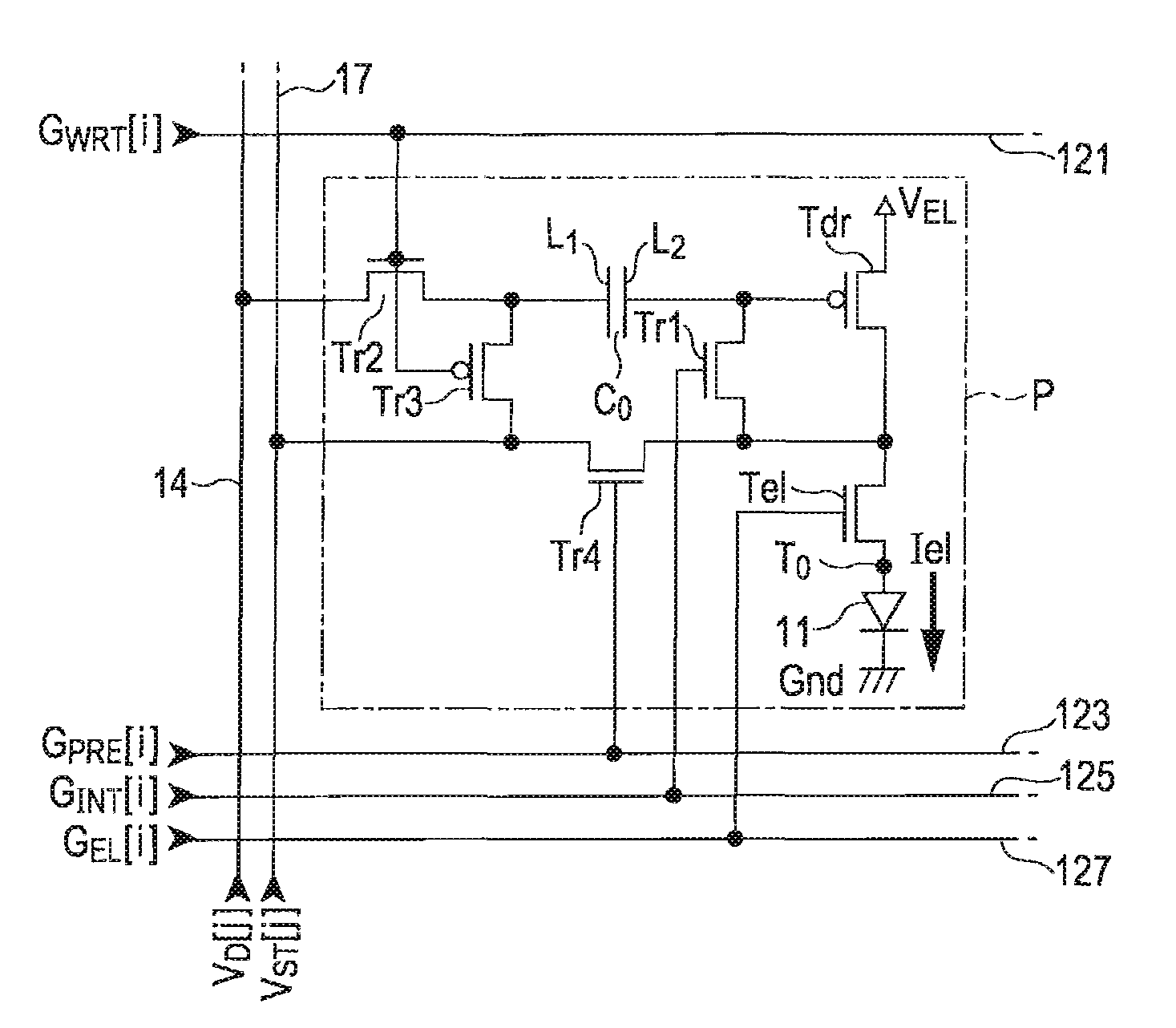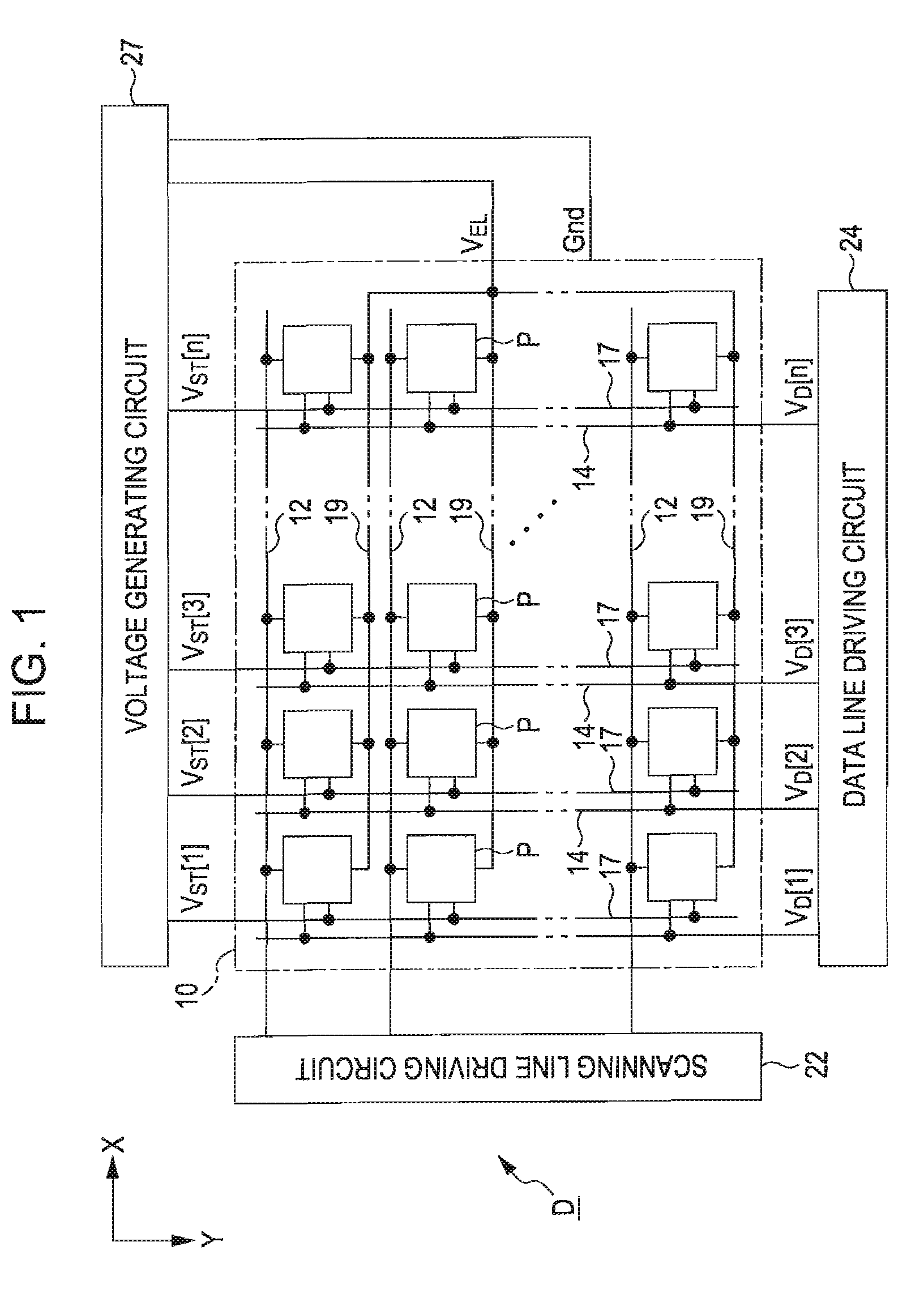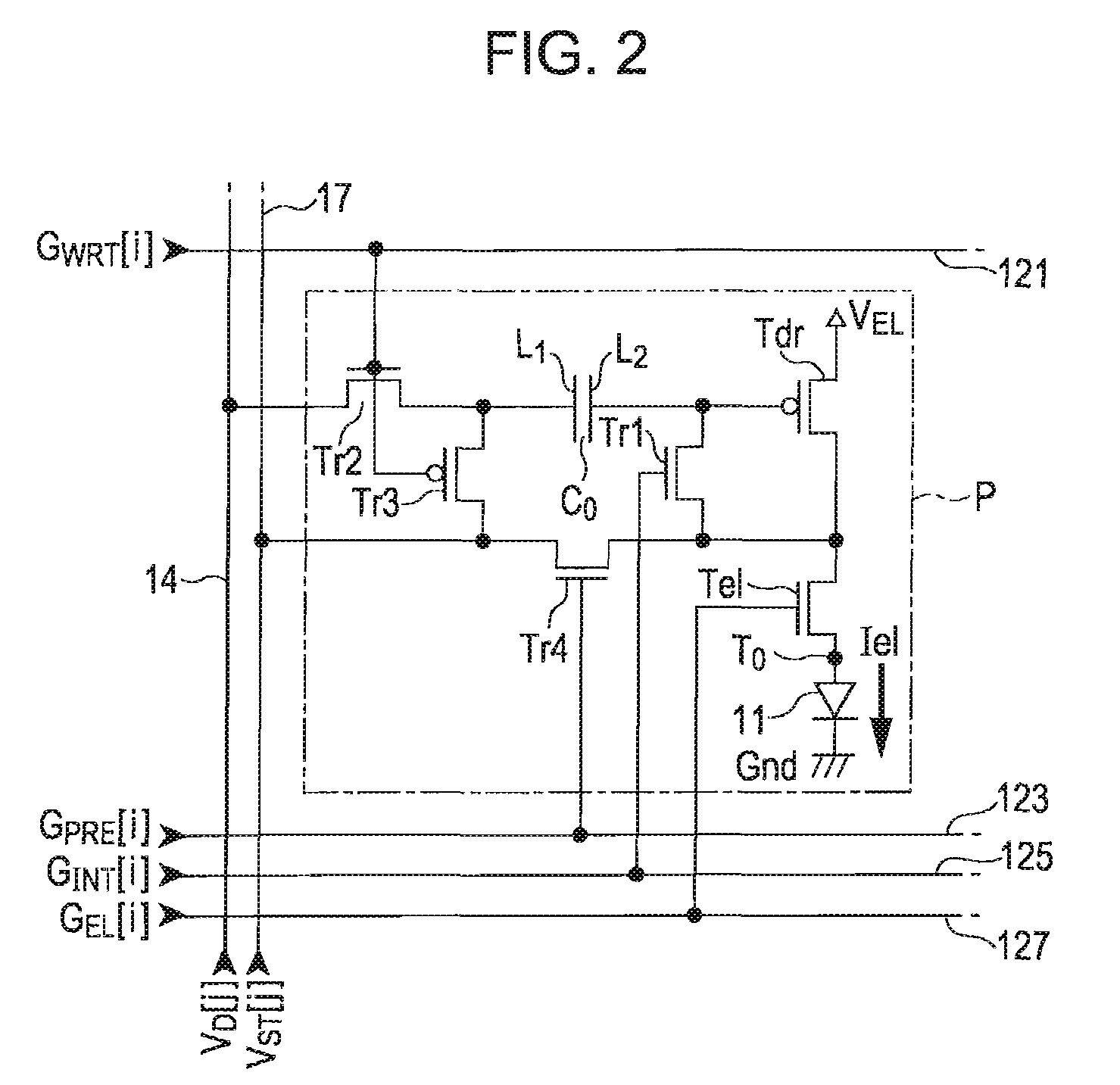Electro-optical device and electronic apparatus
a technology of optical elements and electronic devices, applied in static indicating devices, electroluminescent light sources, instruments, etc., can solve the problems of non-uniform gray-scale levels of optical elements, inability to achieve realistic solutions, and low resolution pixels, and achieve simplified wiring arrangements
- Summary
- Abstract
- Description
- Claims
- Application Information
AI Technical Summary
Benefits of technology
Problems solved by technology
Method used
Image
Examples
first alternative embodiment
(1) First Alternative Embodiment
[0070]In the above described embodiments, the configuration in which the transistor Tr2 and the transistor Tr3 are transistors of different conductivity types is illustrated; however, the configuration for activating the transistor Tr2 and the transistor Tr3 in a complimentary manner is not limited to it. For example, as shown in FIG. 11, the transistor Tr2 and the transistor Tr3 may be transistors of the same conductive types (n-channel type) with respect to each other. With this configuration, the gate of the transistor Tr2 is connected to a first scanning line 121a, and the gate of the transistor Tr3 is connected to a second scanning line 121b. Then, the first scanning line 121a is supplied with a first scanning signal GWRT[i] having the same waveform as the scanning signal GWRT[i] shouts on FIG. 4, and the second scanning line 121b is supplied with a second scanning signal GWRTb[i] having the inverted logic level with respect to the first scanning...
second alternative embodiment
(2) Second Alternative Embodiment
[0071]The transistor Tr4 and / or the light emission control transistor Tel are omitted where appropriate. FIG. 12 is a circuit diagram snowing a configuration of the pixel circuit P in which the transistor Tr4 and the light emission control transistor Tel shown in FIG. 2 are omitted. With this configuration, during the initialization period PINT, the scanning signal GWRT[i] attains a low level, and the initialization signal GINT[i] attains a high level. Thus, the first electrode L1 is maintained at the electric potential VST by turning on the transistor Tr3, the gate of the driving transistor Tdr that is diode-connected through the transistor Tr1 converges on the electric potential VG(=VEL−Vth) corresponding to the threshold voltage Vth.
[0072]During the subsequent writing period PWRT, the initialization signal GINT[i], which is in a low level, turns off the transistor Tr1. Furthermore, as the scanning signal GWRT[i] is changed to a high level, the tra...
third alternative embodiment
(3) Third Alternative Embodiment
[0074]Conductive types of the transistors that form the pixel circuit P may be changed where appropriate. For example, the driving transistor Tdr shown in FIG. 2 may be of an n-channel type. In this case, the electric potential VST supplied to the power feed line 17 is set to an electric potential that turns on the driving transistor Tdr when the gate of the driving transistor Tdr is supplied with the electric potential VST. Note that, when the driving transistor Tdr is of an n-channel type, the transistor Td1 is connected between the gate of the driving transistor Tdr and the power supply line (electric potential VEL). In addition, the OLED element is just one of examples of the electro-optical element 11. For example, in place of the OLED element, various light-emitting elements, such as an inorganic EL element or an LED (Light Emitting Diode) element, may be employed as an electro-optical element according to the aspects of the invention. The elect...
PUM
 Login to View More
Login to View More Abstract
Description
Claims
Application Information
 Login to View More
Login to View More - R&D
- Intellectual Property
- Life Sciences
- Materials
- Tech Scout
- Unparalleled Data Quality
- Higher Quality Content
- 60% Fewer Hallucinations
Browse by: Latest US Patents, China's latest patents, Technical Efficacy Thesaurus, Application Domain, Technology Topic, Popular Technical Reports.
© 2025 PatSnap. All rights reserved.Legal|Privacy policy|Modern Slavery Act Transparency Statement|Sitemap|About US| Contact US: help@patsnap.com



